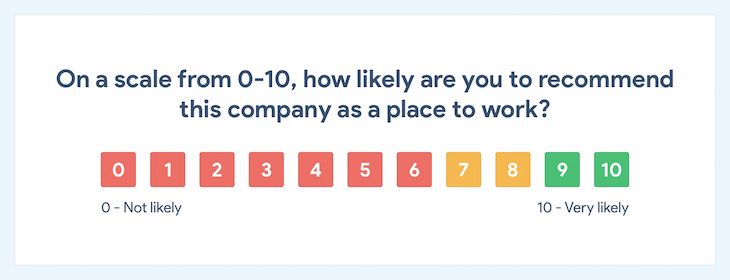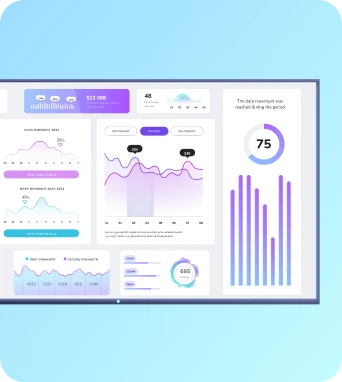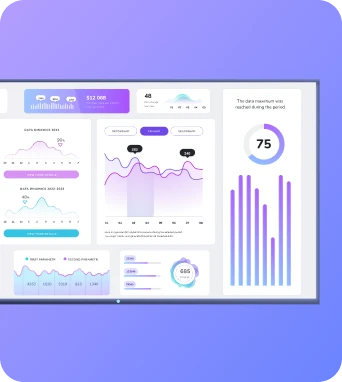You’re convinced your company’s one of the best businesses around. You may even have the awards to prove it! But if you asked employees what they thought about your brand, would they say the same thing? Or something less flattering?
This is the beauty of internal marketing — you don’t need to beg employees to like you. It’s an authentic, meaningful, and ultra-simple way to build an awesome business from the inside out.
But let’s back up for a second. What even is internal marketing? And if it’s really that important, how can you get started?
This guide covers everything you should know about using internal marketing as a business strategy. Once we explore what it is and how it’s different from other marketing strategies, we explain why you should be using it and give examples to get your creative juices flowing.
Want to get started ASAP? We list a step-by-step process at the bottom of this guide.
But before we jump into any of that, let’s start at the beginning:
What Is Internal Marketing Anyway?
Internal marketing is a business marketing strategy designed to engage employees instead of your customers. The goal is to connect your values and beliefs so employees can become authentic ambassadors of your brand.
We’re not just talking about yearly potlucks, either. Internal marketing digs deeper than that — it’s about fostering a mission and vision that aligns with your products, services, and team.
That means:
- Giving opportunities to share your company’s mission and become an active member of the workplace (think eNPS surveys, for example).
- Communicating your values through meetings, social media, and office TV screens to keep everyone on the same page (and address potential problems).
- Providing ways to connect with coworkers both inside and outside of work (which, okay, can be a potluck).

To summarize: internal marketing is a workplace philosophy designed to embrace, champion, and elevate the employees on your team.
And since employees are the primary consumers of your brand, investing in them first is a surefire way to grow your business.
The Real Impact Of Using Internal Marketing Strategies
Here’s the deal: external marketing can advertise your business, but only internal marketing can grow it.
Think of this dichotomy like planting a seed: nothing can come up without the right foundation in place (aka internal marketing).
How many of us worked terrible jobs with awful ‘foundations’ in place? You probably don’t have great memories on the clock — and you probably told all your friends about it, too.
See, you can out-advertise an unknown competitor, but you can’t undo a terrible employee experience. And if your business isn’t all-in with its internal marketing strategy, you can’t expect great reviews and booming business to follow.
But the beauty of internal marketing is that you can get started at any time. Even if you never had a plan in place before (or just have a few employees), you can set up a winning strategy that takes your business to the next level.
Companies with an internal marketing strategy don’t just have a better rap, but they’re far more profitable, too.
We let the numbers speak for themselves here:
- Brand messages travel 561% further when shared by employees rather than just corporate social media pages.
- 84% of people trust word-of-mouth recommendations over external marketing strategies like inbound marketing.
- Companies with engaged employees may outperform their competitors by a whopping 202%.
- Effective internal communication strategies can boost stakeholder returns by 47%.
- Better employee experiences (like more engagement, for example) can lead to a 22% reduction in turnover rates.
In other words: if you’re not using internal marketing as a part of your business strategy, you’re missing out on more than just good vibes.
What’s The Difference Between Internal Marketing And Other Types Of Business Strategies?
So internal marketing sounds great and all — but what makes it different from external marketing?
In a nutshell: the audience. And the strategies used to present it. But we both know it goes a little deeper than that.
Here’s what you need to know:
Internal Marketing vs Inbound Marketing
Inbound marketing is all about helping customers find their way to your business on their own. Maybe you’re writing blog content to do this, or maybe you’re publishing YouTube videos. Either way, the goal of ‘pulling’ employees to your brand is always the common denominator.
Internal marketing, on the other hand, doesn’t focus on customers — it’s designed for employees. And while you totally can make YouTube videos or blog content for your team, you’re not encouraging them to buy product. You just want them to feel engaged!
Internal Marketing vs Outbound Marketing
Outbound marketing, sometimes referred to as traditional marketing, is all about pushing customers towards your brand. This could be done through flyers, emails, or cold calls, although a far better method is to use TV screens and digital signage (wink wink).
Internal marketing may use some elements of outbound marketing to get your employees’ attention. But again, it’s not about selling a product — it’s about selling yourself to build a real, genuine connection.
Internal Marketing vs Account-Based Marketing
In account-based marketing (ABM), businesses create custom messages to encourage existing customers to buy more. With an advertising team and an audience segmentation tool, you can craft personalized messages that speak directly to your audience’s pain points.
Internal marketing does share the personalization element of ABM, since employee engagement typically happens on a personal level. Just keep in mind the goal isn’t to connive, trick, or overgeneralize. Remember: you want your connection to be real and personal!
Internal Marketing vs Conversational Marketing
Contrary to popular belief, conversational marketing is not the same as word-of-mouth marketing. Instead, it’s about having two-way conversations with customers via text, email, or on-site chatbots.
There’s certainly a conversational element to internal marketing, especially as your organization grows and expands. However, engaging employees is a lot more about walking the talk. There’s a lot more action involved with internal marketing.
3 Modern Examples Of Internal Marketing
You know the what and why behind internal marketing. You just don’t know what it looks like in practice.
Here are three of the best internal marketing examples to paint a clearer picture:
1. Patagonia
Not every organization can afford in-house childcare, but team behind Patagonia certainly can. They also provide autonomous work schedules and paid time off to surf when conditions are right.
We admit this isn’t feasible for every business. But it’s still a great example of leaning into company values. The more you align your business’s beliefs with employees, the more they can connect and engage with your brand.
2. Starbucks
It comes as no surprise to see Starbucks on this list. The coffee titan has practically taken over the world with its teas, coffees, and pastries — and not just because of its customers, either.
The welcoming atmosphere created by Starbucks employees has a lot to do with the brand’s internal marketing strategy. From paid college tuition to shares in company stock, there are many policies in place to help employees — or partners, as they’re called — feel seen and appreciation.
3. Hyatt
Hyatt is a giant in the hospitality industry, and a major inspiration with its internal marketing strategies. Rather than focusing on perfection like other hotel chains, their goal is to build strong emotional connections with employees, customers, and stakeholders.
All Hyatt employees have the power to speak to guests on their own terms — which means not using a sales script or a robotic-sounding prompt. In addition, housekeeping employees can clock off anytime after they’ve completed their tasks. They also receive eight weeks of paid leave if they’re primary caregivers.
Want more examples of internal marketing? Check out our guide to six internal marketing strategies you can use to impact your business.
How To Get Started With Internal Marketing
You’re totally sold on using internal marketing. The problem is, you don’t know where to begin.
Let’s look at the steps needed to build an internal marketing strategy, starting with the most foundational point:
1. Gather Your Stakeholders
Two heads are better than one, right? That’s exactly why you need an internal marketing crew. This may consist of your HR team and managers, or for smaller companies, a few members of the c-suite.

If you’re feeling ambitious about your plan, you can always add employees to the team. They know better than anyone what a good internal marketing strategy should be, and can provide unique insights while fleshing out a strategy.
2. Audit Your Efforts
There’s a good chance you’ve already tried internal marketing before. Maybe it went pretty well in the past, or was a monumental flop all around. Either way, knowledge is power at this stage of the game — and knowing what worked (and what didn’t) is a huge part of success.
First, gather details on the internal marketing strategies used in the past and present for your brand. Then, compile everything into a single report for your stakeholder team to review.
While writing this report, be sure to ask yourself:
- What are we already doing to engage employees?
- Is there already an internal marketing plan? Where’s it buried?
- How effective are our existing internal marketing strategies?
You may not know how to answer that last question, and that’s okay! Any time is a good time to start measuring your efforts, and you may want to get some numbers before making major changes to your strategy. Think about setting some SMART goals as well so you can get qualitative and quantitative measurements.
3. Build A Guidebook
One of the biggest elements of an internal marketing strategy is encouraging employees to share your brand on social media. But you probably don’t want this happening without some rules in place (amiright?). Hence, you need to write a guidebook for your employees.
This guidebook can be as simple or complex as you want. It doesn’t even need to be a real book! A slideshare, PowerPoint, or infographic may be all you need to get the point across.
Don’t feel like going through all this trouble? Digital signage can be your friend. With Fugo, you can create simple signage slides that employees can scan to access internal content.

4. Think Outside The Box
Now’s the time to set up programs that define your internal marketing strategy. These don’t have to be boring or cookie-cutter, however. Just draw some inspiration from your company values.
Is your brand passionate about improving human health and wellbeing? Try purchasing employee bikes that mix smoothies while you pedal (this is an actual thing).
Are you big about spending time with family? A ‘paw’ternity leave program may be more up your alley.
The point is to pick an internal marketing strategy that integrates perfectly with your business values. You don’t have to spend a lot of money or effort, but you do need to make it authentic to your brand.
5. Choose The Right Tools
You could try to implement an internal marketing strategy with nothing but paper and an Excel sheet. However, it’s a whole lot simpler to try a few tools and make the process easier on everyone.
A few of our favorite tools for internal marketing are:
- EveryoneSocial: An engagement platform where you can turn employees into influencers.
- Zavvy: Run employee engagement surveys (eNPS) to measure the effectiveness of your internal marketing.
- Fugo: Manage internal marketing with digital signage displays for physical, remote, or hybrid work environments.
Fugo also comes with a 14-day free trial so you can get started immediately — no credit card required.
Jump Into Internal Marketing With Fugo
The best way to grow your business isn’t dumping millions into advertising. Instead, it’s about growing from the inside out. First, you build an internal marketing strategy to engage your employees. Then, you sustain the momentum by leaning into authentic connections.
Fugo is a big believer in the power of internal marketing, which is why we’ve been a corporate communications leader for several years (and counting). We make it easy to display information and communicate internally without sending yet another bone-dry email.

You can think of Fugo like Canva for TV screens — you can design custom screen displays with your brand name and colors. These slides can run in the background on your office TV, light up your meeting rooms, or run in conference centers. And best of all - they can carry your message far & wide to any corner of your organization, even those that don’t sit at desks or check a company email.
But let’s not get ahead of ourselves. Why not learn more at your own pace? Sign up for a demo of the Fugo platform today to see our software in action for yourself.





